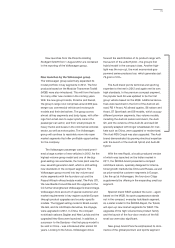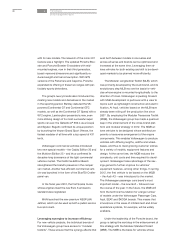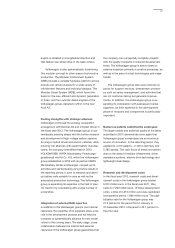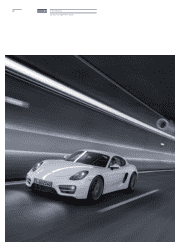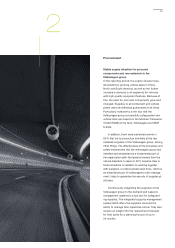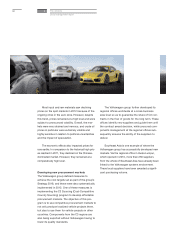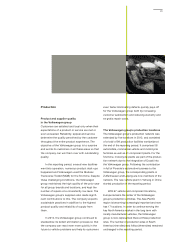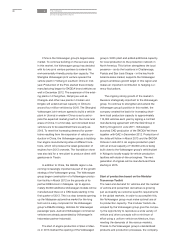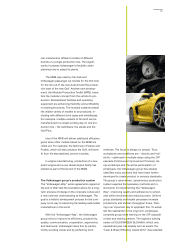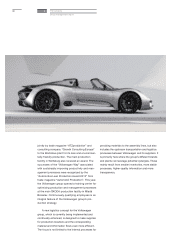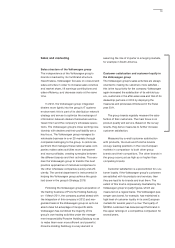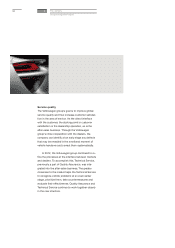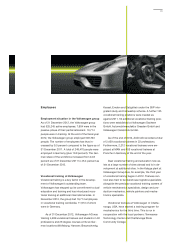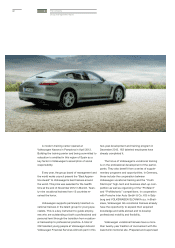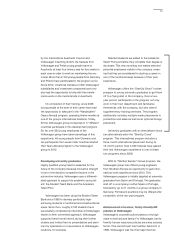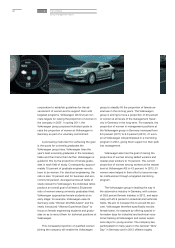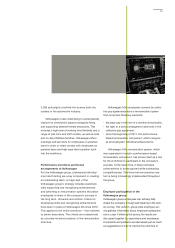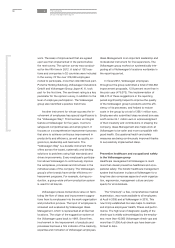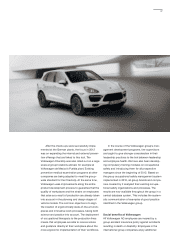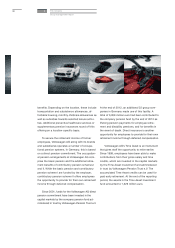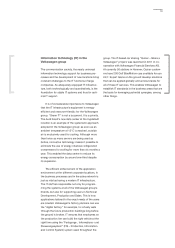Porsche 2012 Annual Report Download - page 93
Download and view the complete annual report
Please find page 93 of the 2012 Porsche annual report below. You can navigate through the pages in the report by either clicking on the pages listed below, or by using the keyword search tool below to find specific information within the annual report.
Sales and marketing
Sales structure of the Volkswagen group
The independence of the Volkswagen group’s
brands is backed by its multibrand structure.
Nevertheless, Volkswagen focuses on cross-brand
sales activities in order to increase sales volumes
and market share, lift earnings contributions and
sales efficiency, and decrease costs at the same
time.
In 2012, the Volkswagen group integrated
dealers more tightly into the group’s IT systems
environment; this is part of its distribution network
strategy and serves to optimize the exchange of
information between dealers themselves and be-
tween them and the company’s wholesale opera-
tions. The Volkswagen group’s close working rela-
tionship with dealers and their profitability are a
key focus. The Volkswagen group manages its
wholesale business in over 20 markets through
companies belonging to the group. A central de-
partment that manages these national sales com-
panies makes sales activities more transparent
and more profitable, creating synergies between
the different brands and their activities. This ena-
bles the Volkswagen group to transfer the best
practice approaches of individual companies to
the other wholesale companies quickly and effi-
ciently. The central department is instrumental in
helping the Volkswagen group achieve the goals
laid down in the group’s Strategy 2018.
Following the Volkswagen group’s acquisition of
the trading business of Porsche Holding Salzburg
on 1 March 2011, the company pushed ahead with
the integration of this company in 2012 and reor-
ganized tasks in the Volkswagen group so as to be
able to take full advantage of its specific skills.
Volkswagen has combined the majority of the
group’s own trading activities under the manage-
ment responsibility Porsche Holding Salzburg so as
to make them even more efficient and powerful.
Porsche Holding Salzburg is a key element in
assuming the role of importer in emerging markets,
for example in South America.
Customer satisfaction and customer loyalty in
the Volkswagen group
The Volkswagen group’s sales activities are always
oriented to making its customers more satisfied –
this is the top priority for the company. Volkswagen
again increased the satisfaction of its vehicle buy-
ers, customers in the after-sales area and that of its
dealership partners in 2012 by deploying the
measures and processes introduced in the fiscal
year 2011.
The group brands regularly measure the satis-
faction of their customers. The main focus is on
product quality and service. Based on the survey
results, they derive measures to further increase
customer satisfaction.
Measured by overall customer satisfaction
with products, the Audi and Porsche brands
occupy leading positions in the core European
markets in comparison to both other group
brands and their competitors. The other brands in
the group score just as high as or higher than
competing brands.
Customer satisfaction is a precondition for cus-
tomer loyalty. If the Volkswagen group’s customers
are satisfied with its products and services, then
they are loyal to its brands and trust them. The
extent of this trust is impressively illustrated by the
Volkswagen group’s loyalty figures, which are
measured on a regular basis. The Volkswagen pas-
senger cars brand, for example, has maintained a
high level of customer loyalty in its core European
markets for several years in a row. The loyalty of
ŠKODA customers has likewise kept that brand in
the upper rankings in a competitive comparison for
several years.
89


